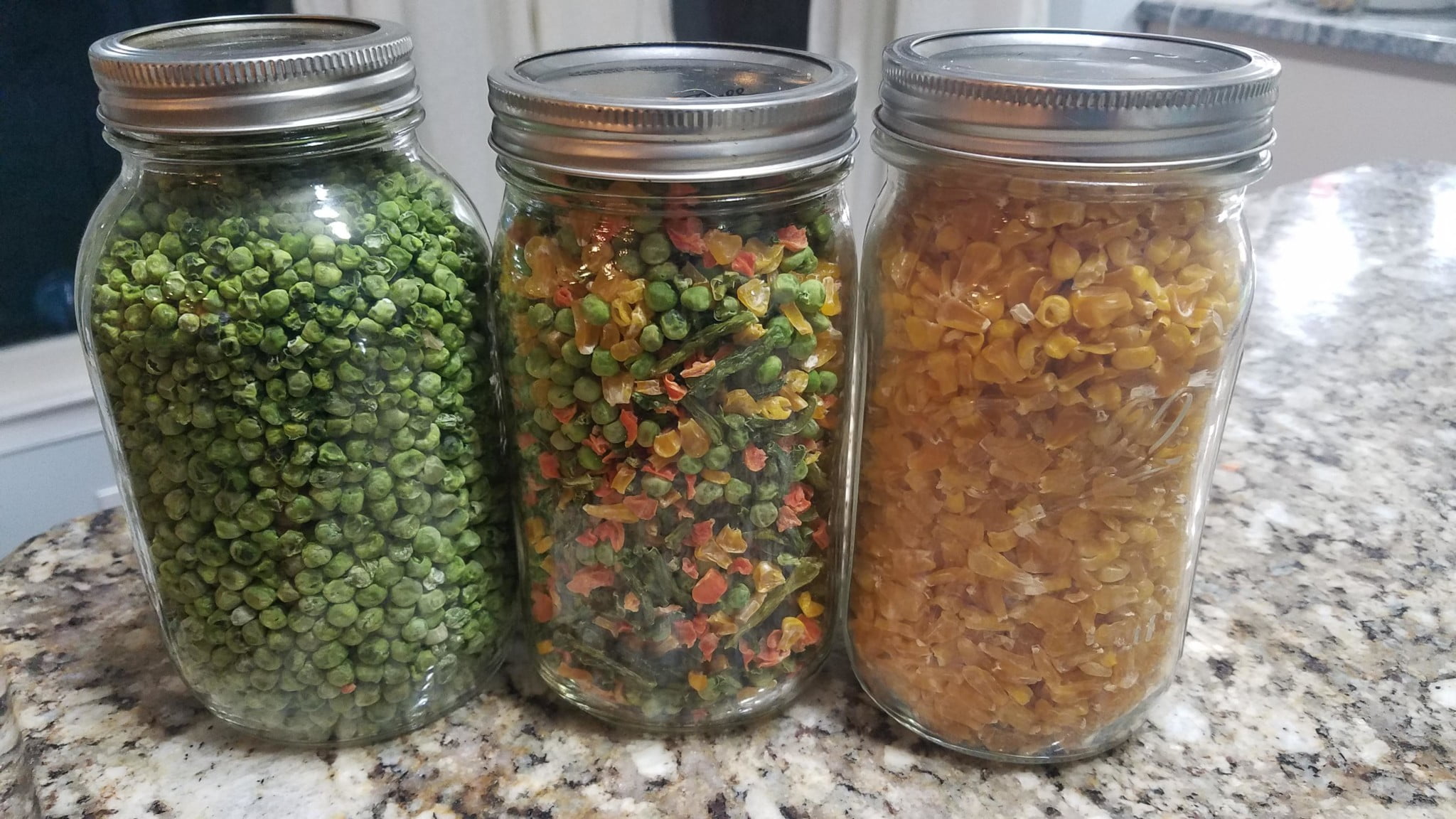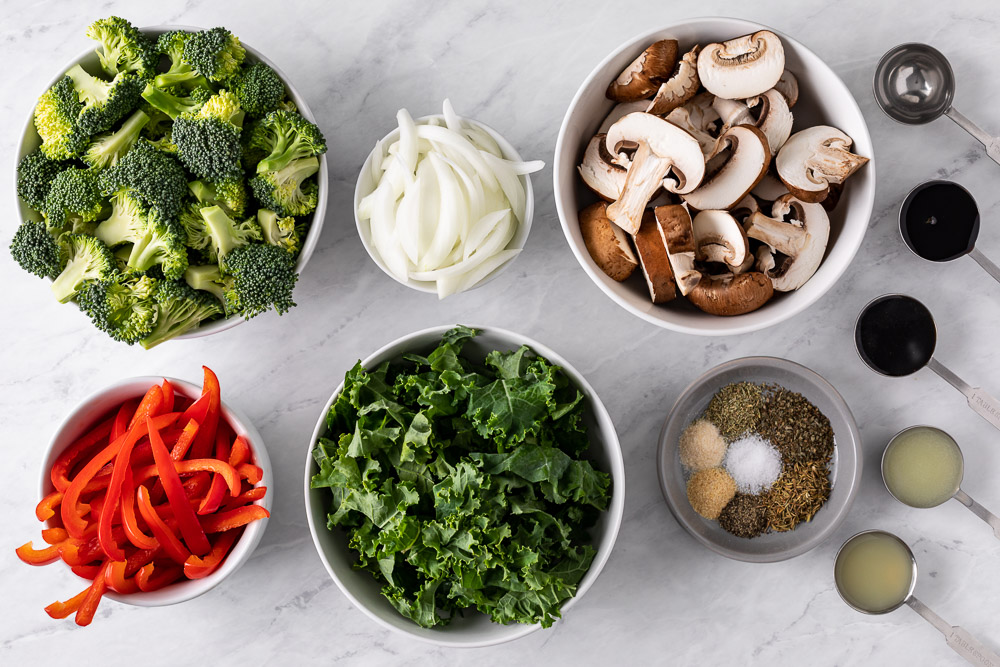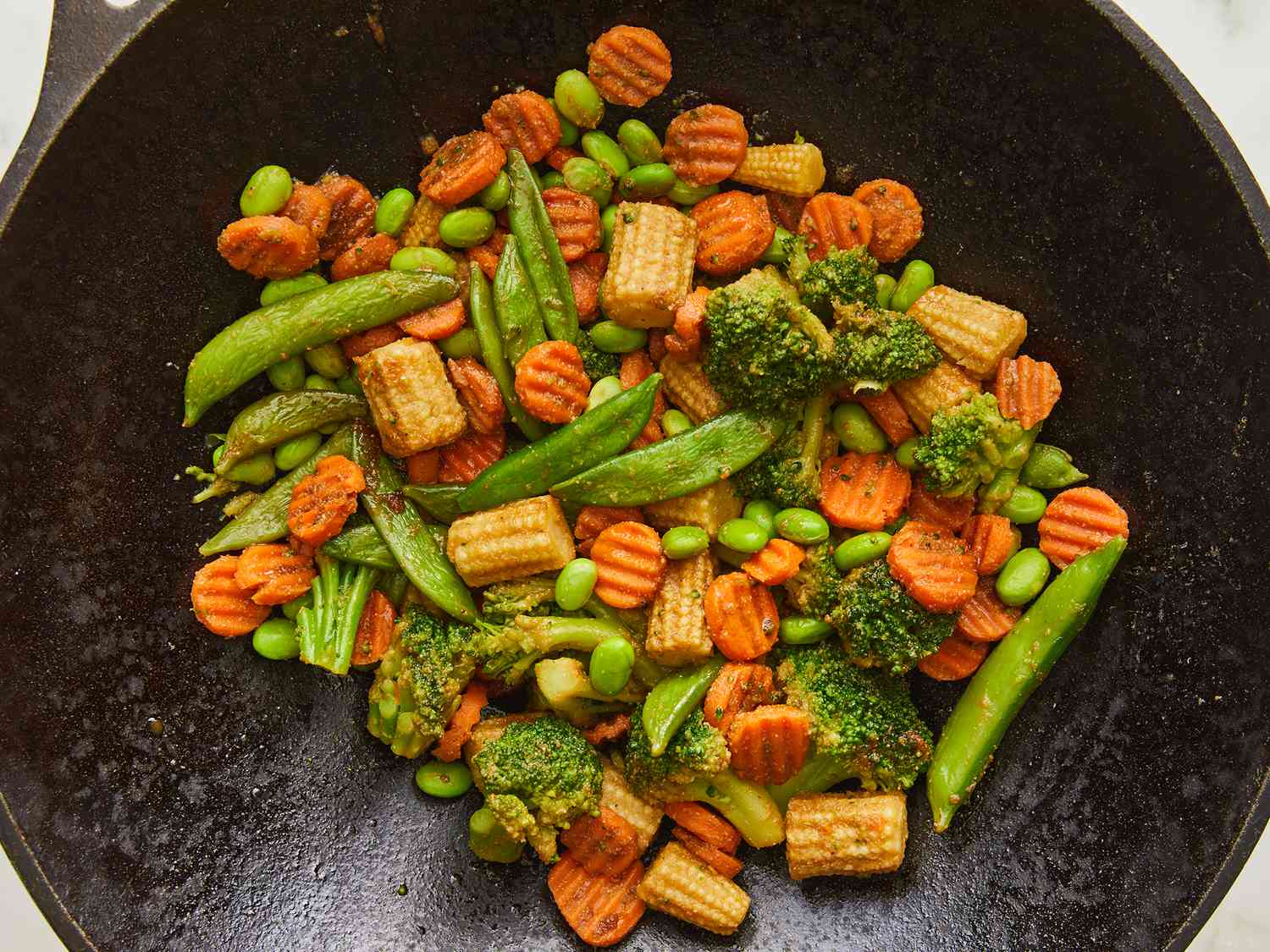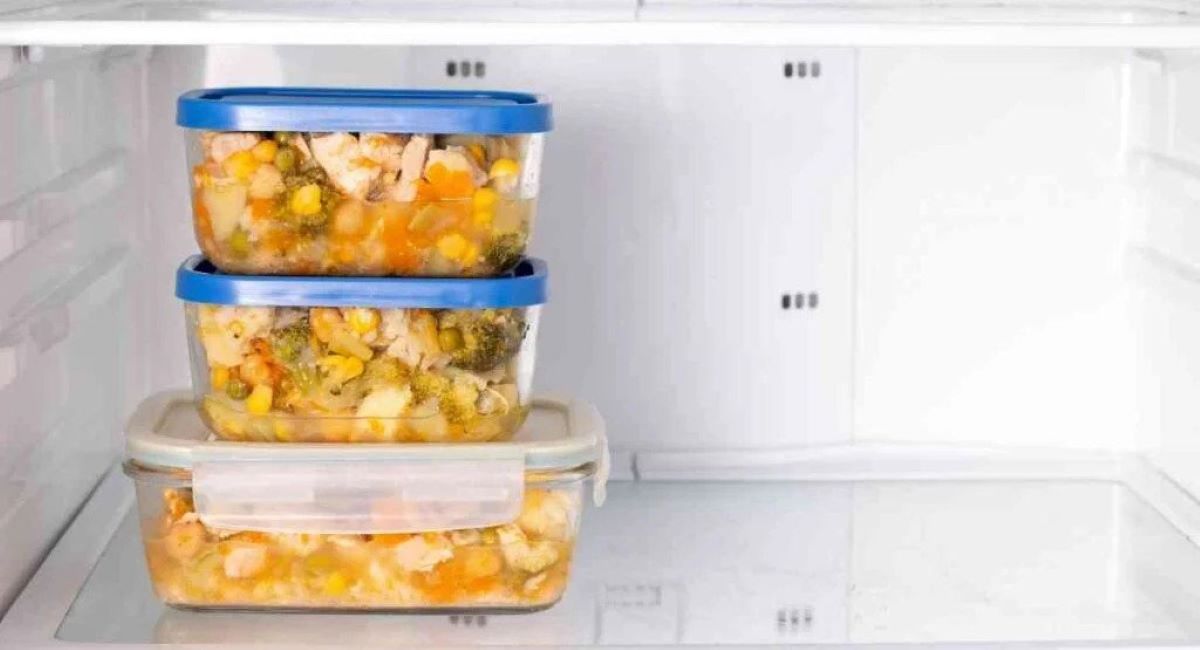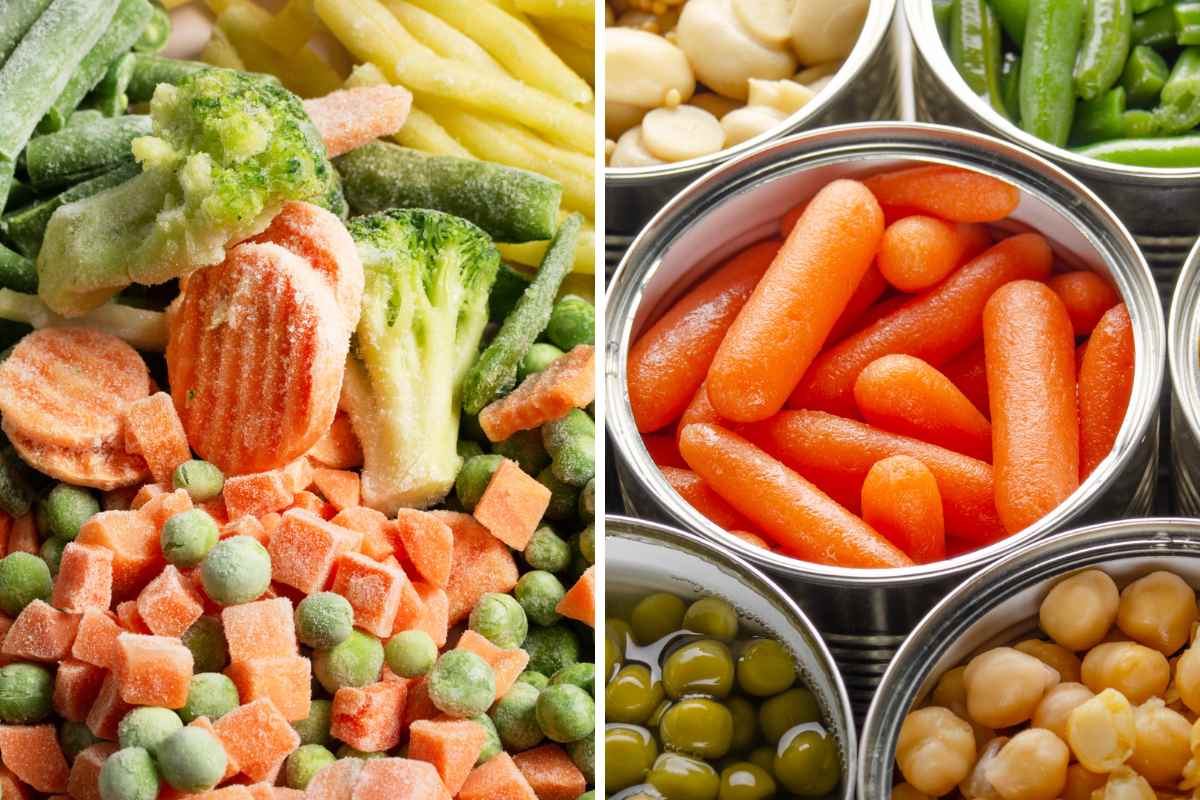Home>Gardening News and Trends>Latest News>How To Cook Frozen Vegetables In The Microwave


Latest News
How To Cook Frozen Vegetables In The Microwave
Modified: January 22, 2024
Looking for the latest news on how to cook frozen vegetables in the microwave? Discover easy methods and tips for deliciously cooked frozen veggies in minutes!
(Many of the links in this article redirect to a specific reviewed product. Your purchase of these products through affiliate links helps to generate commission for Chicagolandgardening.com, at no extra cost. Learn more)
Table of Contents
Introduction
When it comes to cooking frozen vegetables, the microwave can be your best friend. With its quick and convenient cooking capabilities, the microwave allows you to enjoy the freshness and nutrients of frozen vegetables in a matter of minutes. Whether you’re a busy professional, a college student, or someone who simply wants a hassle-free cooking experience, the microwave is an excellent tool for preparing delicious and healthy meals.
Unlike traditional stovetop or oven cooking methods, which can take a substantial amount of time and effort, cooking frozen vegetables in the microwave requires minimal preparation and reduces the overall cooking time. It’s a time-saving option that still allows you to enjoy the taste and nutritional benefits of vegetables.
In this article, we will explore the benefits of cooking frozen vegetables in the microwave, guide you on how to choose the right frozen vegetables, provide tips on preparing them for microwave cooking, and share step-by-step instructions on how to cook them to perfection. So, whether you’re a beginner in the kitchen or a seasoned chef looking for a quick and healthy option, read on to discover the wonders of cooking frozen vegetables in the microwave.
Benefits of Cooking Frozen Vegetables in the Microwave
There are several reasons why cooking frozen vegetables in the microwave is a smart choice. Let’s explore some of the key benefits:
- Time Efficiency: One of the major advantages of using the microwave to cook frozen vegetables is the time it saves. Whether you have a busy schedule or you’re simply looking for a quick meal, the microwave allows you to have perfectly cooked vegetables in just a fraction of the time it would take on the stovetop or in the oven.
- Nutritional Value: Contrary to popular belief, cooking vegetables in the microwave can help retain a higher level of nutrients compared to traditional cooking methods. Microwaving vegetables for a short period of time helps preserve their vitamins and minerals, promoting a healthier and more nutritious meal.
- Taste and Texture: Microwave cooking not only saves time but also helps maintain the natural taste and texture of the vegetables. Unlike boiling, which can sometimes result in a loss of flavor and a soggy texture, microwaving allows vegetables to retain their crunchiness and delicious flavor.
- Uniform Heating: Microwaves distribute heat evenly throughout the food, ensuring that the vegetables are cooked uniformly. This eliminates the risk of some parts being overcooked while others remain undercooked, resulting in a well-balanced and satisfying dish.
- Convenience: Cooking frozen vegetables in the microwave is incredibly convenient. You can easily store frozen vegetables in your freezer and have them readily available whenever you need them. Additionally, microwave-safe containers make it hassle-free to cook, serve, and clean up – making it a perfect option for those with limited kitchen space or who are on-the-go.
These advantages make cooking frozen vegetables in the microwave a practical and efficient solution for busy individuals who still want to enjoy the benefits of a nutritious and delicious vegetable-rich diet.
Choosing the Right Frozen Vegetables
When it comes to cooking frozen vegetables in the microwave, choosing the right varieties is crucial to ensure a tasty and well-cooked dish. Here are some factors to consider when selecting frozen vegetables for microwaving:
- Frozen Vegetable Mixes: Opting for pre-packaged frozen vegetable mixes can be a convenient option as they offer a variety of vegetables already combined in one bag. You can find mixes like stir-fry vegetables, Mediterranean blend, or classic mixed vegetables. They provide a balanced mix of flavors and textures, perfect for a quick and easy meal.
- Single Vegetables: If you prefer specific vegetables, you can choose frozen options that are sold individually. You can find a wide range of options such as broccoli, green beans, peas, carrots, and corn. Single vegetables are versatile and can be used in various dishes or as standalone side dishes.
- Quality: Look for high-quality frozen vegetables that have been properly stored and display no signs of freezer burn. Freezer burn can affect the taste and texture of the vegetables.
- Organic and Non-GMO: If you prefer organic or non-GMO options, check for labels indicating that the frozen vegetables have been certified as organic or non-GMO. This ensures that the vegetables have been grown without the use of synthetic pesticides or genetically modified organisms.
- Sodium Content: Pay attention to the sodium content of frozen vegetable packages, especially if you’re following a low-sodium diet. Some brands may add salt or seasoning to their frozen vegetables, so choose options with reduced or no added sodium if necessary.
Ultimately, the choice of frozen vegetables depends on your personal preferences and the dish you plan to prepare. Experiment with different combinations and flavors to discover your favorites. Keeping a variety of frozen vegetables on hand allows you to easily incorporate them into your meals and enjoy a diverse range of nutrients.
Preparing Frozen Vegetables for Microwave Cooking
Before cooking frozen vegetables in the microwave, there are a few simple steps you should take to ensure they cook evenly and retain their flavor and texture:
- Thawing: Thawing frozen vegetables is not always necessary, but it can help reduce the overall cooking time. If you prefer to thaw, you have a few options. You can transfer the frozen vegetables to the refrigerator and let them thaw overnight, or you can use the defrost function on your microwave. Be cautious not to over-thaw the vegetables, as they can become too soft.
- Drain Excess Water: Some frozen vegetables, like spinach or broccoli florets, may release excess water during cooking. To prevent a watery dish, drain the excess water from thawed vegetables before cooking. Simply place them in a colander and let the water drain before transferring them to a microwave-safe container.
- Seasoning: While seasoning is not necessary, you can add some herbs, spices, or your favorite seasonings to enhance the flavor of the vegetables. Popular choices include garlic powder, onion powder, Italian seasoning, or a sprinkle of salt and pepper. Toss the vegetables with the seasoning before cooking for an extra burst of flavor.
- Butter or Oil: Adding a small amount of butter or oil can help prevent the vegetables from drying out during cooking. You can drizzle a little melted butter or olive oil over the vegetables before microwaving, or toss them with a small amount of oil to coat them evenly.
- Covering: Covering the microwave-safe container with a microwave-safe lid or microwave-safe plastic wrap helps trap steam and promotes even cooking. This can help prevent the vegetables from drying out or becoming too soft.
By following these preparation steps, you can ensure that your frozen vegetables are ready for the microwave and will result in a delicious, well-seasoned, and perfectly cooked dish.
Steps to Cook Frozen Vegetables in the Microwave
Cooking frozen vegetables in the microwave is a simple and straightforward process. Follow these steps for perfectly cooked vegetables in no time:
- Select a Microwave-Safe Container: Choose a microwave-safe container that is large enough to hold the desired amount of frozen vegetables. Make sure the container has a lid or can be covered with microwave-safe plastic wrap.
- Add the Frozen Vegetables: Place the desired amount of frozen vegetables into the microwave-safe container. Spread them out evenly to ensure they cook uniformly.
- Season and Add Moisture: If desired, season the vegetables with herbs, spices, or a small amount of butter or oil. This step adds flavor and helps prevent the vegetables from drying out during cooking.
- Cover the Container: Cover the container with a microwave-safe lid or microwave-safe plastic wrap. This helps trap steam and ensures even cooking.
- Microwave on High: Set the microwave to high power and cook the vegetables for the recommended time. Refer to the packaging of the frozen vegetables or use the general guideline of 4-6 minutes for 1-2 cups of frozen vegetables. Adjust the cooking time based on your microwave’s power and the desired tenderness of the vegetables.
- Stir and Check for Doneness: Carefully remove the container from the microwave and stir the vegetables. Check for doneness by inserting a fork or testing the texture. If the vegetables are not yet tender, return them to the microwave and continue cooking in 1-minute increments until they reach the desired level of tenderness.
- Serve and Enjoy: Once the vegetables are cooked to your liking, remove them from the microwave and serve them immediately. They can be enjoyed as a standalone side dish or incorporated into other recipes.
Remember to exercise caution when handling the hot container and steam. Use oven mitts or a towel to protect your hands, and lift the lid or plastic wrap away from your face to avoid any potential steam burns.
With these simple steps, you can easily and effortlessly cook frozen vegetables in the microwave, resulting in a flavorful and nutritious addition to your meals.
Tips for Cooking Frozen Vegetables in the Microwave
To ensure the best results when cooking frozen vegetables in the microwave, consider these helpful tips:
- Follow Package Instructions: Always refer to the packaging of the frozen vegetables for specific cooking instructions and recommended cooking times. Different brands and types of vegetables may have slightly different cooking requirements.
- Avoid Overcooking: Be cautious not to overcook the vegetables in the microwave, as they can become mushy and lose their nutrients. Start with the recommended cooking time and adjust accordingly based on your microwave’s power and the desired texture.
- Don’t Overcrowd the Container: Make sure not to overcrowd the microwave-safe container with frozen vegetables. Giving them enough space to spread out ensures even heating and promotes better overall cooking.
- Consider Using Steam Bags: Steam bags specially designed for microwave cooking can be a convenient option for cooking frozen vegetables. These bags help retain moisture and result in tender and flavorful vegetables.
- Add Flavors: Experiment with different herbs, spices, and seasonings to add more flavor to your cooked vegetables. Try garlic, onion powder, lemon zest, or herbs like thyme or rosemary for a delightful taste.
- Monitor the Cooking Time: Keep an eye on the vegetables while they’re cooking in the microwave. Vegetables with a higher water content, like zucchini or bell peppers, may cook faster than denser vegetables like carrots or cauliflower.
- Stir or Toss Occasionally: When cooking larger quantities of frozen vegetables, pause halfway through the cooking time to stir or toss them gently. This ensures even cooking and prevents any portions from becoming overheated or undercooked.
- Use Microwave-Safe Utensils: When stirring or transferring the vegetables, use microwave-safe utensils to avoid any potential damage to your containers or utensils.
- Rest and Serve Immediately: Let the cooked vegetables rest for a minute or two before serving. This allows them to cool slightly and allows any remaining steam to escape.
- Store Leftovers Properly: If you have leftovers, store them in an airtight container in the refrigerator. Reheat them in the microwave for a quick and easy side dish the next day.
By following these tips, you can elevate your microwave cooking of frozen vegetables, resulting in delicious and well-prepared dishes every time.
Safety Precautions
When cooking frozen vegetables in the microwave, it is important to prioritize safety. Follow these safety precautions to ensure a safe cooking experience:
- Use Microwave-Safe Containers: Always use microwave-safe containers when cooking frozen vegetables in the microwave. These containers are designed to withstand the heat generated by the microwave and prevent any potential hazards.
- Avoid Metal Containers and Foil: Never use metal containers, aluminum foil, or metal utensils in the microwave when cooking frozen vegetables. Metal can cause sparks and damage to the microwave, leading to fire or electrical hazards.
- Protect Hands: Use oven mitts or a towel to handle hot containers and plates when removing them from the microwave. The containers can be extremely hot, and the steam can cause burns if not handled with care.
- Be Mindful of Steam: When removing the lid or plastic wrap from the container, do so carefully and away from your face to avoid potential steam burns. Allow the steam to dissipate before handling the vegetables.
- Follow Recommended Cooking Times: Follow the recommended cooking times provided on the packaging of the frozen vegetables. Overcooking can lead to dry, mushy vegetables, while undercooking may result in inadequate heating and potential foodborne illnesses.
- Check for Hot Spots: Before consuming the cooked vegetables, check for any hot spots by stirring them well. This helps distribute the heat evenly and ensures there are no areas that are too hot to eat.
- Reheat Properly: If you have leftovers, make sure to reheat them thoroughly to kill any potential bacteria. Reheat the vegetables until they are steaming hot throughout, stirring occasionally for even heating.
- Follow Food Safety Guidelines: It’s essential to practice proper food handling and storage techniques. Keep frozen vegetables in the freezer until you’re ready to cook them, and refrigerate any leftovers promptly.
- Read Product Labels: Take the time to read and understand the product labels for specific cooking instructions, storage recommendations, and any potential allergen information.
- Follow Manufacturer’s Instructions: In addition to these general safety precautions, always follow the manufacturer’s instructions for your specific microwave model regarding power settings, cooking times, and recommended container usage.
By following these safety precautions, you can enjoy the convenience and benefits of cooking frozen vegetables in the microwave while keeping yourself and your kitchen safe.
Conclusion
Cooking frozen vegetables in the microwave is a time-saving and convenient method that allows you to enjoy flavorful and nutritious meals with minimal effort. The microwave preserves the freshness and nutrients of the vegetables while providing a quick and efficient cooking process. By following the steps outlined in this article, you can easily prepare delicious dishes with perfectly cooked frozen vegetables.
Not only does microwaving frozen vegetables save time, but it also retains their nutritional value, taste, and texture. The even heating in the microwave helps ensure that the vegetables cook uniformly, resulting in a well-balanced dish. Additionally, microwaving frozen vegetables offers the convenience of easily storing them in the freezer and having them readily available whenever you need them.
When cooking frozen vegetables in the microwave, it’s important to choose the right varieties, properly prepare them, and follow the recommended cooking times. By considering safety precautions and using microwave-safe containers, you can ensure a safe cooking experience.
So, whether you’re preparing a quick side dish, adding vegetables to a stir-fry, or creating a nutritious meal, the microwave is a valuable tool for cooking frozen vegetables. Enjoy the convenience, speed, and delicious results that come with microwaving frozen vegetables.


